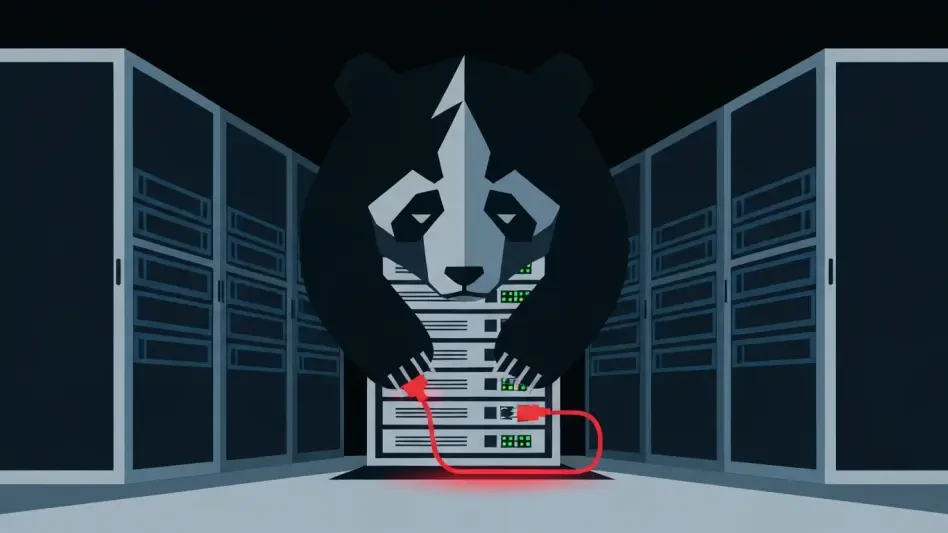In a world increasingly reliant on digital infrastructure for communication, commerce, and security, the emergence of sophisticated cyber threats has become a pressing concern for nations and industries alike, with reports of Chinese state-sponsored Advanced Persistent Threat (APT) groups targeting critical global networks revealing a calculated effort to infiltrate key systems since at least the early 2020s. These campaigns focus on core networking devices like routers and switches, aiming for long-term access to steal data and conduct surveillance. Sectors such as telecommunications, government, military, transportation, and hospitality have been hit hard, with operations spanning multiple continents. The stealth and scale of these activities raise alarming questions about the vulnerability of global infrastructure and the potential consequences for international stability. This exploration delves into the mechanisms behind these cyber espionage efforts, their far-reaching impact, and the collaborative measures being taken to counter them.
Unveiling the Shadowy Operations of APT Groups
The covert activities of Chinese state-sponsored cyber actors, identified by monikers like Salt Typhoon, OPERATOR PANDA, and GhostEmperor, have been meticulously designed to evade detection while penetrating global networks. These groups target essential networking equipment, including routers, firewalls, and switches from prominent vendors such as Cisco, Ivanti, and Palo Alto Networks. Their operations are not confined to a single region; confirmed incidents have been documented in nations like the United States, Australia, Canada, the United Kingdom, and several countries across Europe and Asia. The primary objective appears to be establishing control over pivotal communication nodes, enabling the collection of sensitive intelligence. What sets these campaigns apart is their focus on stealth, often targeting backbone routers at major telecommunications providers to siphon vast amounts of data without triggering alarms. Evidence suggests ties to entities supporting China’s intelligence framework, hinting at a broader, state-orchestrated agenda.
Beyond their geographic reach, the persistence of these APT groups in maintaining access to compromised systems is particularly concerning. Their strategy often involves exploiting known vulnerabilities in widely used hardware and software, capitalizing on delays in patching by organizations. Once inside, they reconfigure systems to ensure prolonged access, often blending their activities with legitimate network traffic to avoid scrutiny. The connection to units like the People’s Liberation Army and the Ministry of State Security, as alleged by international reports, underscores the strategic importance of these operations. This systematic approach to cyber espionage not only threatens individual organizations but also poses a significant risk to the integrity of global communication networks. The ability to manipulate critical infrastructure at this level could provide substantial leverage in geopolitical conflicts, making it imperative to understand and address the depth of these intrusions.
Dissecting the Sophisticated Methods of Attack
Delving into the tactics employed by these cyber actors reveals a complex web of techniques tailored for maximum impact and minimal visibility. Initial breaches often exploit publicly documented vulnerabilities, such as CVE-2024-21887 in Ivanti Connect Secure or various flaws in Cisco IOS XE systems, rather than relying on undisclosed exploits. This approach highlights a critical gap in cybersecurity practices, as many organizations fail to apply patches promptly. Once access is gained, attackers modify router settings, including Access Control Lists, to permit traffic from their controlled addresses. They also use encrypted tunnels via protocols like GRE or IPsec to disguise command-and-control communications, ensuring their actions remain hidden from conventional security tools. Such methods demonstrate a deep understanding of network architecture and a calculated effort to maintain a low profile while extracting valuable data.
Further sophistication is evident in how these groups leverage advanced features of networking devices to deepen their foothold. For instance, capabilities like Cisco’s Embedded Packet Capture are misused to intercept authentication traffic, capturing credentials from protocols with weak encryption. Additionally, techniques such as port mirroring and multi-hop pivoting tools enable attackers to navigate through compromised networks undetected, often creating privileged accounts to secure long-term access. Manipulation of logs and routing tables further obscures their presence, complicating efforts to trace or expel them. The focus on credential theft and redirection of authentication traffic to attacker-controlled servers illustrates a deliberate intent to undermine security frameworks. This intricate blend of technical prowess and strategic patience poses a formidable challenge to defenders, necessitating advanced detection mechanisms and a proactive stance on system updates to thwart these persistent threats.
Assessing the Worldwide Repercussions
The scope of these cyber espionage campaigns extends far beyond isolated incidents, impacting vital sectors across the globe with profound implications for security and trust. Telecommunications, a primary target, serves as the backbone of modern communication, and its compromise allows attackers to monitor sensitive exchanges and potentially disrupt services critical to national and economic stability. Government and military networks, equally at risk, hold classified information that, if accessed, could jeopardize strategic operations. Even industries like transportation and hospitality, often overlooked as targets, face significant threats as their data breaches could reveal patterns of movement or critical logistical details. The strategic selection of these sectors suggests an intent to gather intelligence that aligns with broader geopolitical goals, amplifying the stakes for affected nations and organizations.
Equally troubling is the erosion of confidence in digital infrastructure that these campaigns provoke on a global scale. When core networking devices are infiltrated, the integrity of data transmission across borders comes into question, straining international collaborations and economic interactions. The ability to control key nodes in communication networks provides not just access to information but also the potential to manipulate or interrupt it, posing risks to critical infrastructure worldwide. This widespread impact necessitates a reevaluation of how interconnected systems are secured, especially in sectors integral to public safety and governance. As the repercussions ripple through economies and political landscapes, the urgency to fortify defenses against such pervasive threats becomes undeniable, pushing for stronger policies and international cooperation to safeguard shared digital environments.
Forging a Collective Defense Strategy
In the face of such a pervasive threat, a remarkable coalition of international cybersecurity and intelligence agencies has emerged to counter these espionage efforts with coordinated action. Bodies like the U.S. National Security Agency, Cybersecurity and Infrastructure Security Agency, and Federal Bureau of Investigation, alongside counterparts from Australia, Canada, New Zealand, the UK, and various European nations, have issued joint advisories outlining the threat landscape. These documents not only detail the nature of the attacks but also provide actionable recommendations for network defenders to identify and mitigate compromises. The emphasis on proactive threat hunting and the swift application of security patches reflects a shared recognition of the severity of the situation, urging organizations worldwide to align their practices with best-in-class standards to protect critical infrastructure.
However, the path to a unified defense is fraught with challenges stemming from disparities in national regulations and varying levels of cybersecurity maturity across regions. While the collaborative spirit is evident, implementing consistent measures globally remains complex, as some nations may lack the resources or frameworks to respond effectively. The joint advisories stress the importance of tailoring mitigation strategies to local contexts while maintaining a global outlook on threat intelligence sharing. This balance is crucial, as the targeted sectors—ranging from telecommunications to government—represent strategic interests that transcend borders. Looking back, the collective response to these cyber campaigns demonstrated a pivotal moment in international cybersecurity cooperation, setting a precedent for how nations tackled shared digital threats with urgency and solidarity, paving the way for more robust future defenses.








